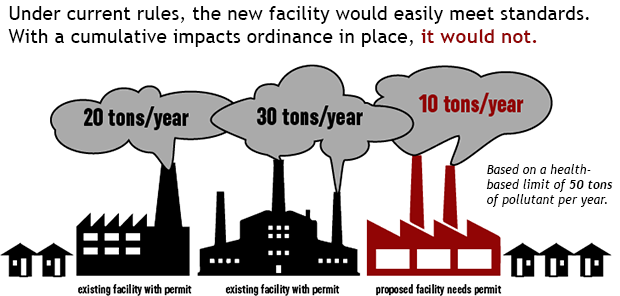… should the Air Quality Act be interpreted in order to protect the people who live around these facilities or should the act be interpreted as a way to issue air pollution permits as quickly as possible?”
— Eric Jantz, Staff Attorney
ALBUQUERQUE, N.M. – Yesterday, the Albuquerque Bernalillo County Air Quality Board unanimously voted to deny an appeal of an air pollution permit issued to Honstein Oil & Distributing, LLC. The Honstein facility is located near homes in the San Jose neighborhood in the South Valley of Albuquerque and holds a 6,000 gallon gasoline storage tank. The facility is one of many polluting facilities found in the South Valley, a community recognized by the US EPA as an “Environmental Justice community”.
The appeal was brought by the public-interest law firm New Mexico Environmental Law Center (NMELC) for Southwest Organizing Project (SWOP) and San Jose residents Esther and Steven Abeyta. The appeal stated the Air Quality Board had failed to assess actual, cumulative air pollution impacts upon the people who live in San Jose neighborhood when it granted the air pollution permit. It also failed to uphold its mandate under the New Mexico Air Quality Control Act to “prevent or abate air pollution.”

“The heart of the matter is whether the Air Quality Control Act should be interpreted to protect the people who live around these facilities, or should the Act be interpreted in a way to issue air pollution permits as quickly as possible,” says Eric Jantz, NMELC Staff Attorney. “We and our clients believe it should be interpreted to protect public health. Based on tonight’s decision, the Air Quality Board believes otherwise.”
“Even with their track record of ignoring environmental justice communities, today’s decision by the Air Quality Board is truly shameful,” says Juan Reynosa, SWOP Environmental Justice Organizer. “Once again, every party at the table agrees that there is an air quality problem in San Jose, but nobody in a position of power is willing to do anything about it. It makes us wonder what is the point of the Air Quality Board and Environmental Health Department in the first place.”
The Environmental Health Division (EHD) granted Honstein’s permit application in June 2014. The permit allows the plant to emit 2.26 tons of volatile organic compounds per year. The EHD granted the permit without considering whether Honstein’s air emissions, either alone or in combination with emissions from other pollution sources, would pose a reasonable risk to public health.
“This community carries a disproportionate burden of polluting industries and has carried that burden for years,” says Jantz. “The EHD approval of this permit fails to take into account the host of other industries pumping pollution into the air over this predominately Latino community. It sends a message to the residents of San Jose that their lives don’t matter as much as those in non-minority and more affluent neighborhoods.”
“The resources spent on these hearings, attorneys and experts, could have just as easily been spent on air monitoring in the very communities they’re fighting against” says Reynosa. “Results like today are why the community can not in good faith attempt to negotiate solutions with the City government and Air Quality Board.”
NMELC and its clients will consider next steps.
